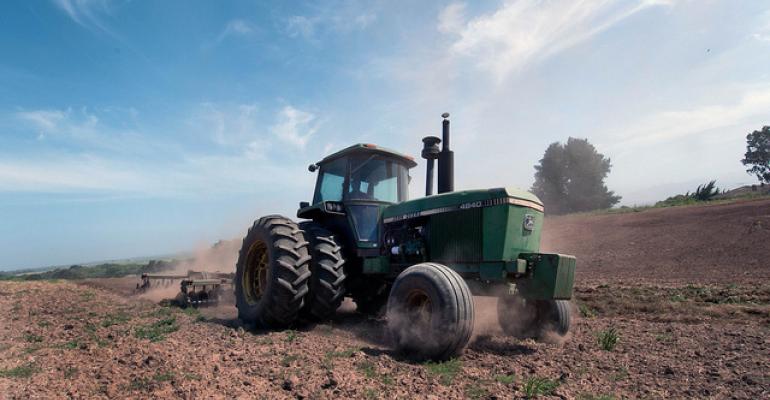Consumers like to think of organic farms as small, local enterprises with a deep connection to environmental principles. While there are certainly many farms like that, the popularity of and demand for organic products has led to the growth of Big Organic, with mega-farms that rival some of their conventional counterparts in terms of output and profits.
 Consider the National Agricultural Statistics Service’s 2011 Certified Organic Production Survey, a first-of-its-kind, in-depth accounting of farms certified organic by the U.S. Department of Agriculture. By the USDA’s calculation, the average organic farm brings in $484,726 in sales each year. However, farms with annual sales of $500,000 or more account for nearly 80% of all organic sales, even though such enterprises make up only 12.5% of farms.
Consider the National Agricultural Statistics Service’s 2011 Certified Organic Production Survey, a first-of-its-kind, in-depth accounting of farms certified organic by the U.S. Department of Agriculture. By the USDA’s calculation, the average organic farm brings in $484,726 in sales each year. However, farms with annual sales of $500,000 or more account for nearly 80% of all organic sales, even though such enterprises make up only 12.5% of farms.
That means that just as with conventional agribusinesses, there are a few fat cats at the top making most of the money. (Sales are not the same as profits, but it stands to reason that there’s a strong correlation between the two.) When you take out the farms pulling in $500,000+ and their sales and recalculate the average, it drops to $102,331 per farm. The average sales for those fat cats? $2.6 million.
Then there’s the case of Iowa hog farms. In 2011, Iowa accounted for 58% of organic hog and pig sales in terms of dollars despite having only 11 farms, out of a national total of 97. New York, with 12 hog farms, had 1.4% of sales. The Iowa mega-farms average close to 700 pigs sold per year, while in New York it’s around 30 pigs.
Of course, any USDA-certified organic farm, regardless of size, must adhere to strict standards. Among other things, that means no antibiotics for animals and no synthetic fertilizers or pesticides for crops (although certain “natural” pesticides are still allowed) — all of which is good for the environment and for the consumer.
Still, one can’t help but wonder if something isn’t lost as the organic movement becomes Big Business. If part of the consumer appeal is connecting with small farmers — an idyllic image Big Organic is quick to capitalize on — maybe it’s time we took a closer look at where our organic food comes from.
[Photo courtesy of USDA]





